This lovely town in central Vietnam is a common favorite along the classic Vietnam travel route. Understanding a bit about Hoi An’s history and knowing the top things to do will help you best enjoy your stay. In this Hoi An travel guide I’ll share all the details.
What to expect
Hoi An’s well-preserved heritage architecture and its many colorful lanterns give it an irresistible charm. There’s virtually no high-rise commercial development and much of this town is kept free of motorized traffic. To top it off, the beach is just 5km (3 miles) away.
Its lively but calm atmosphere definitely feels a world away from cities like Hanoi or Ho Chi Minh. It can still get very busy, however.
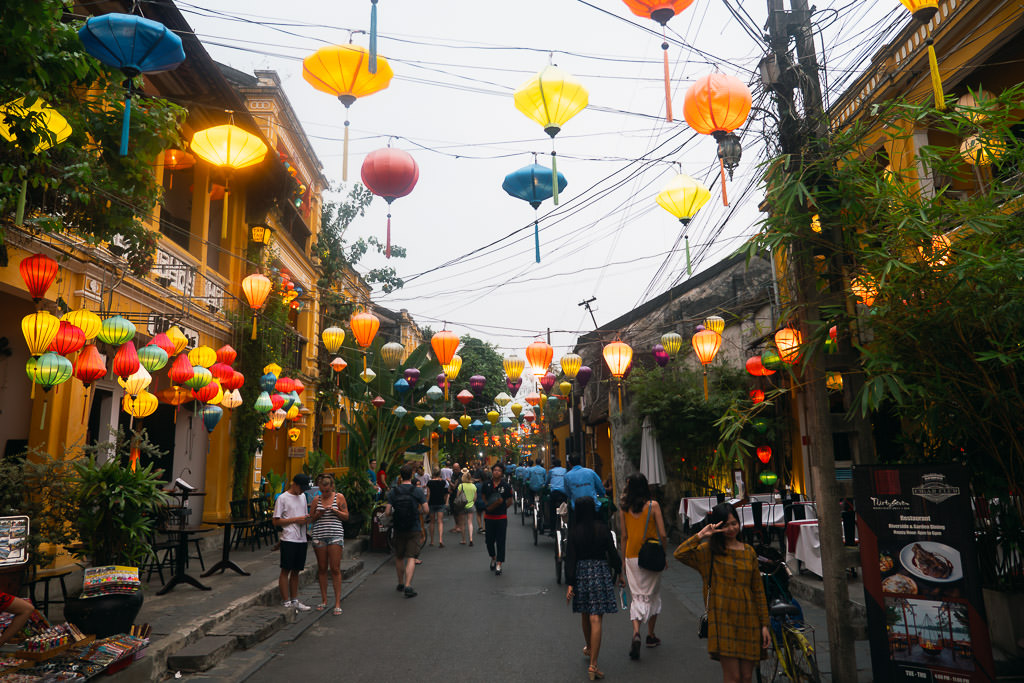
Since it’s a popular place you won’t be alone. The Old Town’s streets can get quite congested with pedestrians and cyclos, especially when day-trippers from Da Nang arrive in the afternoon.
Despite this, most visitors — from backpackers to couples to digital nomads — fall in love with Hoi An.
What makes Hoi An unique?
Over the past two decades or so, Hoi An developed into a delightful and tourist-friendly place. But it’s notable, first of all, because of its history.
Hoi An was for long time a key trading port. It’s here that Vietnam traded with merchants from Portugal, China, Japan, India and the rest of the world. In the 18th century, Hoi An was considered one of the most important trading hubs in all of Southeast Asia.
Those cute low-rise houses you see all over Hoi An? Those are the original Chinese-styled shophouses where all manner of things were crafted and sold.
In each shophouse, a family would run a shop on the building’s ground level and live on the upper floors.
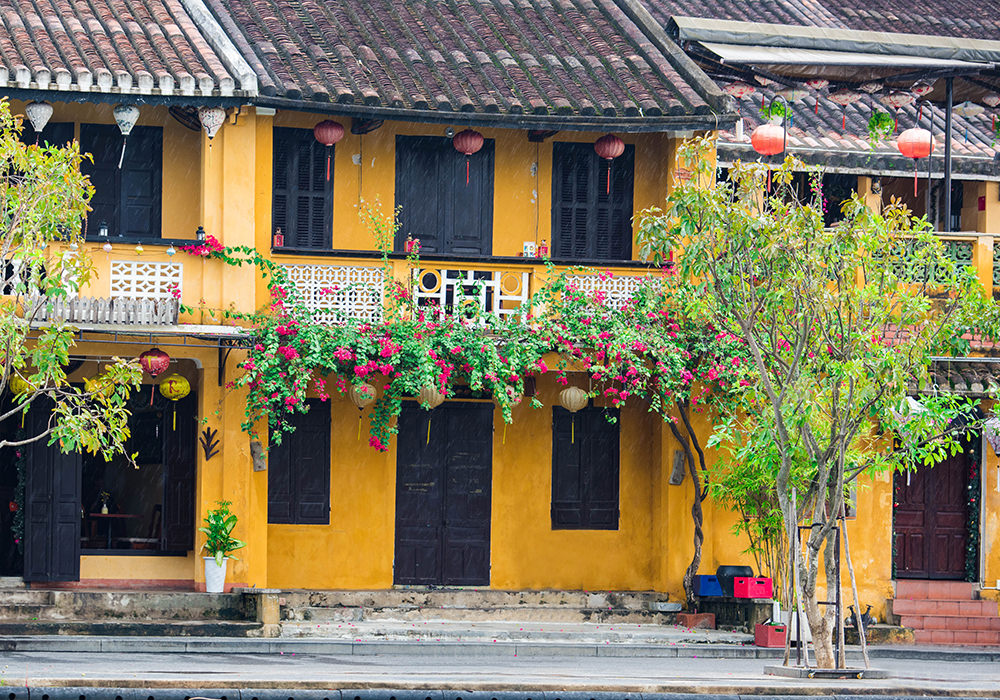
These days, the wooden shophouses serve as restaurants, cafes, or souvenir shops. But if you squint your eyes a bit, you can still imagine the activity that took place in these shophouses and all around the docks.
Most port towns in Asia were redeveloped with modern buildings, so their heritage was sadly lost. Hoi An’s shophouses and old street grid remained intact, which is why it has received UNESCO World Heritage recognition.
Hoi An will come alive all the more when you see it as an example of what many places in Asia once looked like.
Besides the historical aspect, Hoi An is nowadays home to a fantastic variety of restaurants and cafes — and it’s a great base for activities including diving, cooking lessons, fishing trips, bicycle tours, and more.
How to get to Hoi An
The most direct way of getting to Hoi An overland is by long-distance bus. There are many bus connections including:
- From Nha Trang to Hoi An (10 hours)
- From Hanoi to Hoi An (16 hours)
- From Hue to Hoi An (3 hours)
- From Da Lat to Hoi An (15 hours)
If you want to go by train then you should go to the nearest city Da Nang, as there is no train station in Hoi An itself. For example, you can
go from Ho Chi Minh City to Da Nang by train. This will take 16 hours, so you may want to get the overnight train, or break up your journey by adding other stops to your Vietnam itinerary. From Da Nang railway station it’s about a 40-minute taxi or bus ride to Hoi An.
The quickest way to get to Hoi An is by air. It doesn’t have its own airport, so you should look for flights to Da Nang airport.
Things to do in Hoi An
Explore the Old Town
A stroll through the buzzing town is a feast for the senses. The lanterns, plastered French colonial houses and the slowly paddling vendors on the Thu Bon River give the town a peaceful vibe.
Meanwhile, the honking motorbikes, yelling market salesmen and gift shops with postcards and fridge magnets catapult you back in modern-day Vietnam with a snap of the fingers.
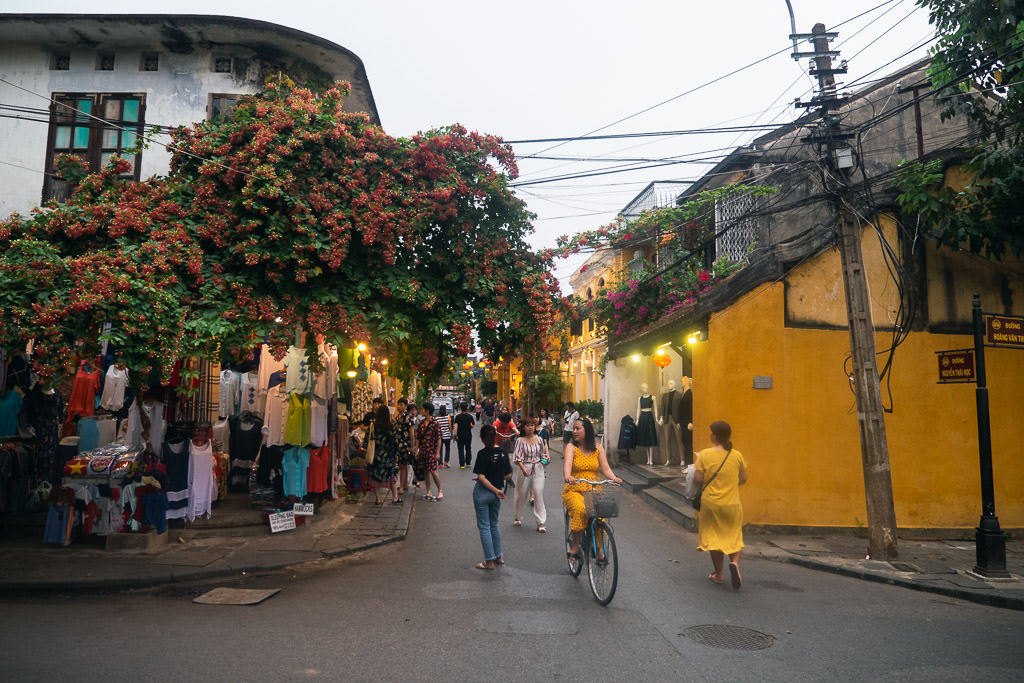
Officially you will need a ticket to walk around the Old Town. However, it’s only likely to be checked at the designated monuments.
Admission to the Old Town
So here’s the deal: the staff in the yellow checkpoint houses don’t ask every visitor to show their entrance ticket. However, you can apparently be checked at random while walking the old part of Hoi An. The fee is used to keep this UNESCO-listed city in good shape.
In practice, you technically don’t need to pay the entrance fee just to walk around the city. But if you are planning to see some of the designated monuments, there’s no reason not to head for the small yellow ticket booths and get your 120.000 dong admission. It comes with 5 small coupons that you can use at different sights, plus a helpful map.
Enjoy Hoi An’s colorful lanterns
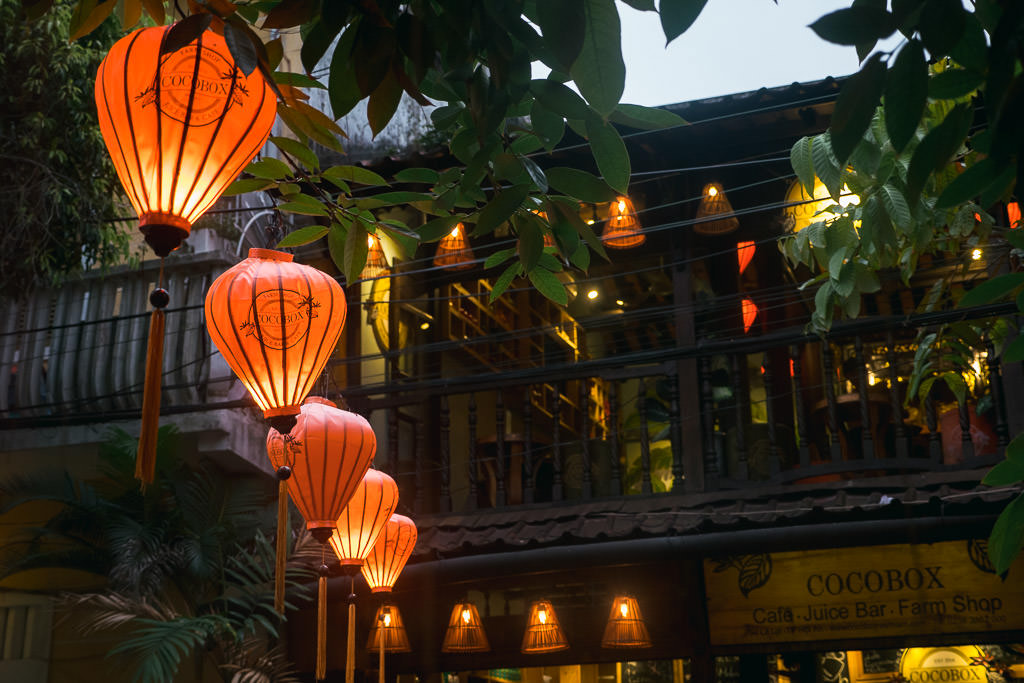
You’ll quickly notice the many lanterns hanging over the streets of Hoi An, which give it such a lovely atmosphere.
You can buy your own (sometimes handcrafted) lanterns at the many dedicated shops.
There is a monthly lantern festival, during which floating candles are released onto the river. You can find the dates and more info here.
Get a tailored suit
Hoi An is home to hundreds of tailors. It’s become known as the perfect place to buy a tailored suit or tailored dress for far less than you’d ever pay for it at home.
The price of a fully custom suit starts at around $120 USD.

If you’re in Hoi An for at least a few days, consider visiting a tailor and getting your measurements taken. Be sure to read a few guides beforehand on how to bargain and how to judge the quality.
The tailoring industry was once introduced in Hoi An as a way to get visitors to stay longer. It sure worked as it took off like crazy, becoming the easiest place to buy custom tailoring in Vietnam.
Take a riverboat tour
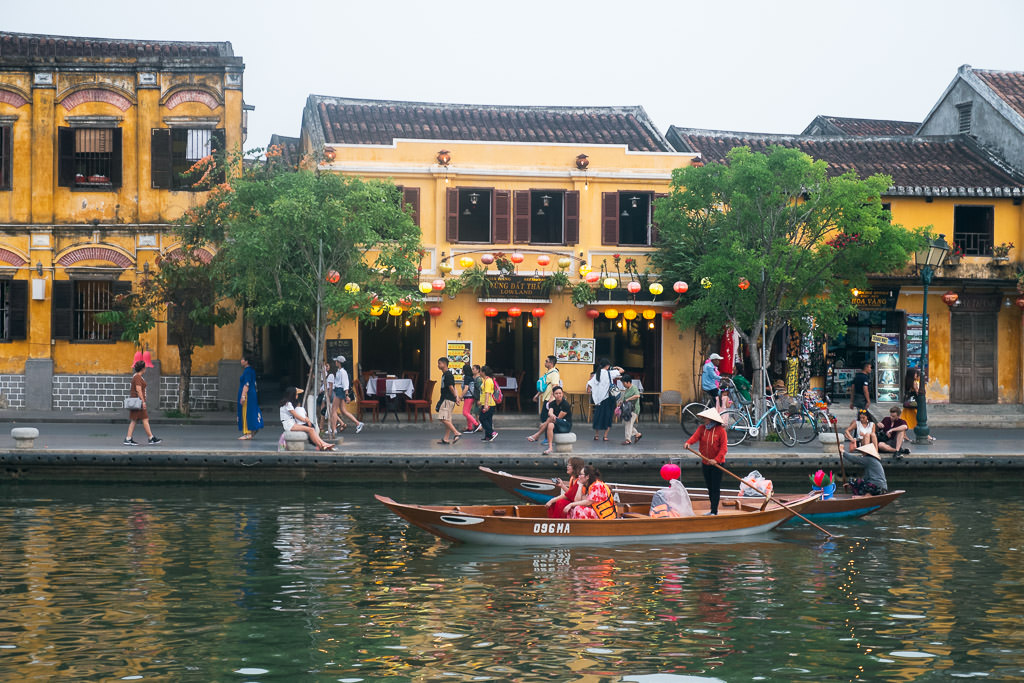
The other key thing to do in Hoi An is to take a riverboat tour, either in a traditional basket boat or in a sturdier longtail.
You’ll find many boat people near the docks ready to show you around, some paddling their passengers around in almost a Venice gondola-style.
For a more complete experience, you can book this tour that includes a basket boat ride, market visit, and cooking class.
Visit Ba Mu Temple
One of the key landmarks in Hoi An is the Ba Mu Temple, a relic from 1626. In contrast to the French architecture you find in Hoi An, Ba Mu symbolizes the Chinese influences in feudal Vietnam before the time when the baguette and pate made their appearance.
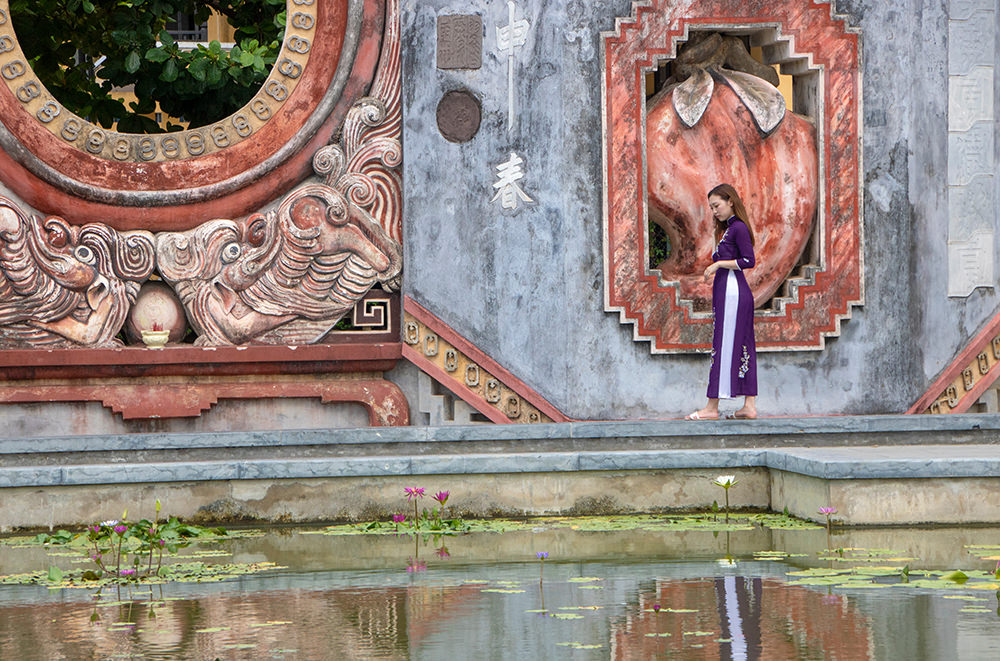
The peaceful pond, garden, and the richly decorated entrance gates are photo-worthy, and many lovebirds get their romantic shots done here.
This temple complex is not part of the paid monuments, so you can enter for free.
See the Japanese Bridge
The most iconic bridge in town is the Japanese Bridge, which dates back to the 18th century. Crossing the Japanese Bridge costs you one of the five entry coupons (the staff here actually checks everyone).

There are a small temple and statues of dogs and monkeys that symbolize the Chinese years in which the construction started and finished. Sadly, the bridge is very crowded, and it’s hard to actually use it for its original purpose; to walk to the other side.
To be honest, the bridge is prettier from the outside. Since it’s covered by a roof and dark inside, you don’t even see the wood carvings when you’re walking on it. From the riverside the views are way better and, importantly, there’s also a walking bridge where you can pass to the other side of the Old Town for free.
Stroll the central market
Often markets offer a look into the soul of a city or community, and Hoi An is no exception. The Central Market in the Old Town has so many things for sale, it almost becomes a day trip on itself.
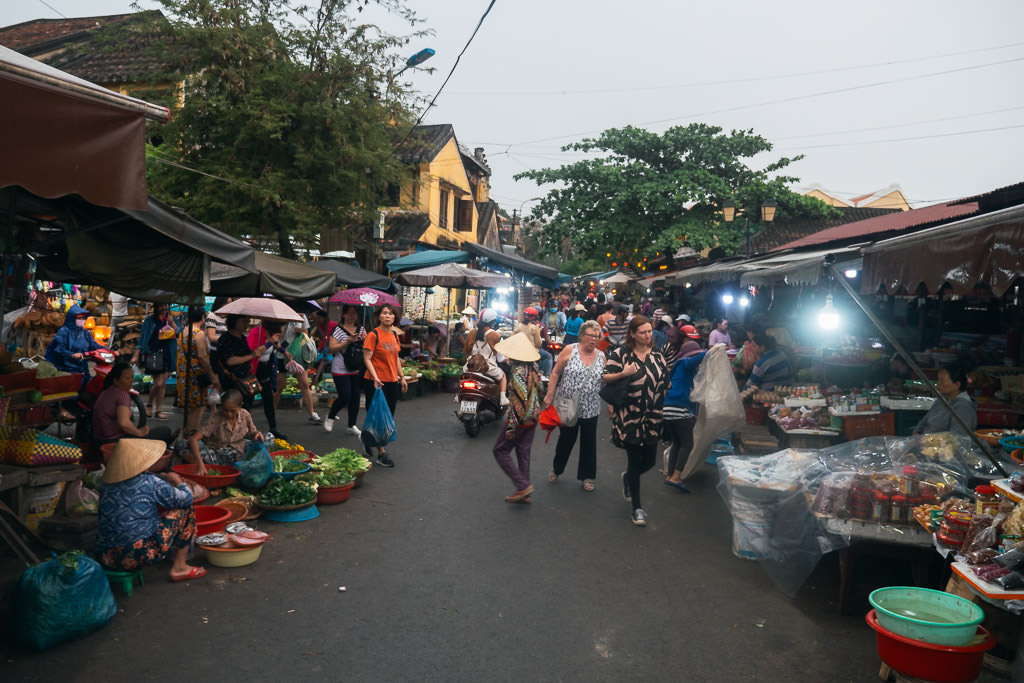
As you navigate through a maze of motorbikes and vendors carrying around baskets, the smells of durian and coriander fight for attention. It’s a pleasant place to stroll around, get some freshly squeezed juices or a bowl of hearty noodle soup.
This is also an excellent place to sample a banana pancake, a typical Vietnamese street food. Some salesmen and -women add peanut butter or chocolate paste, making this little sweet suckers dangerously addictive.
Visit historical trading houses
Among the many sightseeing places you can visit in the center are several old houses. Some are well-maintained, like the Old House of Phùng Hưng right next to the Japanese Bridge. This dark-wooden establishment stands here for almost 250 years, and it used to be a trading house for valuable goods such as silk.
The second floor is a workshop for knitters where you can watch the ladies make their embroideries and buy their creations as a souvenir. The furnishing, vases and other artsy details in the interior are gorgeous.
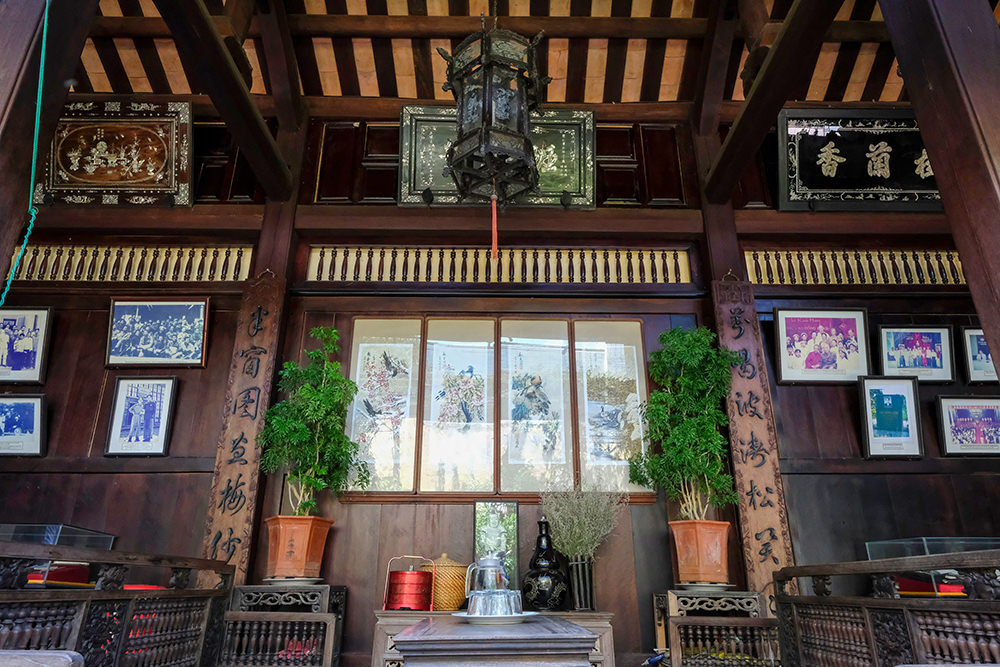
You might also enjoy a quick peek into the Duc An House, located in the same street as the Old House of Phùng Hưng. The current owner is a descendant of those who built the house, and he’s a living guidebook to the house’s 160-year old history. The wooden beams breathe history, and the carved patterns on the walls almost make this house look like an artist’s workshop.
Communal houses and assembly halls
Not tired of cultural impressions? On the long list of sights in Hoi An these two communal houses make their appearance. In times past, these were used for business meetings and worship.
The Cam Pho Temple is relatively peaceful, probably because it’s on the very edge of the Old Town. Chances are, you can enjoy this temple without pointy camera lenses or elbows in your back. The vibe in this serene place is pure, with amazing decorations, artworks and original altars.
The Minh Huong Communal House lies just outside the packed core of the Old Town as well, but on the opposite side. This complex was mainly used as a place of worship for Chinese who fled the ruling during the Qing Dynasty, to a safer Vietnam that welcomed the political refugees.
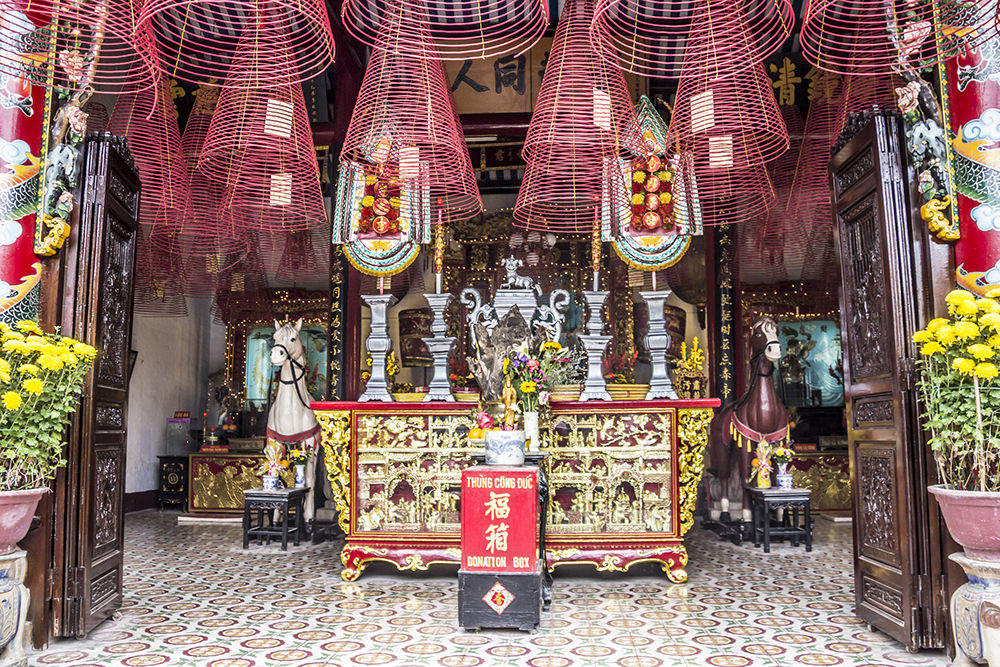
Some of the prettiest meeting places are the Chinese Assembly Halls. Usually, they are decorated with a pretty front gate, a central seating hall, lush gardens and an altar to honour the ancestors. Especially the Cantonese Assembly Hall – built in 1786 – with its authentic lanterns and beautifully painted beams is a magnificent piece of Chinese-Vietnamese architecture. Go early in the morning, when the tour groups and buses haven’t arrived yet.
Explore the rural surroundings
The Old Town is beloved and much-photographed, but Hoi An offers some great escapes to the nearby countryside. One of the best things to do in Hoi An is actually to explore around it!
Leave the town behind and you’ll soon be navigating over narrow concrete roads surrounded by hardworking buffalo, glimmering rice paddies, and songbirds lyrics.

For example, steer your motorbike or bicycle a few kilometers east for a visit to Tra Que, or the so-called ‘Vegetable Village’. All the vegetables served in the restaurants in Hoi An are grown and harvested in this maze of green shades.
It’s a pretty sight and it’s interesting to get to know the typical Vietnamese greens as well. You can visit the Tra Que herb village during a guided tour, but it’s worth taking your time and explore the paddies all by yourself. You can even offer a helping hand to one of the farmers with their conical hats and rattling bicycles.
You can explore around Hoi An independently, but if you prefer a guided experience, check out this bicycle tour of the Hoi An countryside.
Go to the beach
Hoi An is just a stone’s throw from the coast. The two popular nearby beaches are Cua Dai Beach and An Bang Beach.
I must admit that there are not exactly the best beaches in Asia. The former is lined by stacks of sandbags in a bid to prevent erosion. An Bang meanwhile is so chuck full of eateries with lounge chairs and bamboo umbrellas that it might almost be difficult to see the ocean.

Tropical paradises these are not, but if you just want to spend an afternoon in the sun, these beaches will definitely do just fine. I had great fun coming here with my mates during my first Asia backpacking trip, having some cheap stir-fries and beers, and a few refreshing dips in the waters.
Take a trip to Da Nang
Hoi An is only 45 minutes from Da Nang, Vietnam’s booming third-biggest city. It has a vaguely Miami-like skyline along the seafront and — thanks to some modern urban planning — it’s comparatively free of the pollution and chaos seen in Hanoi or Saigon.
Its high liveability makes Da Nang popular with expats and nomads, but it also makes for a nice stop on your way to or from Hoi An.
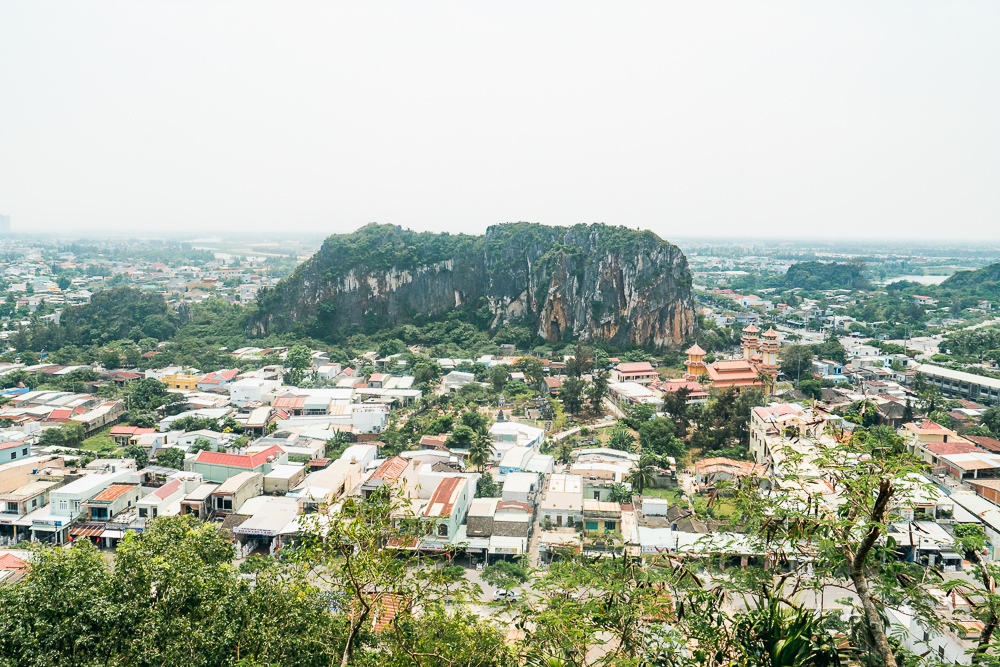
One great attraction near Da Nang is the Marble Mountains, a network of five dramatic mountains with caves, elaborate temples and viewing outlooks. It’s not just a tourist sight but also a popular spot for locals to relax. It’s like a mini-park where you can easily spend an hour or two.
There are organized trips from Hoi An to the Marble Mountains, though I decided to go with a rented motorbike instead. You can leave your bike parked in front of the many souvenir shops, which will let you park for a small fee.

Hoi An travel tips
Getting to Hoi An
Hoi An is a small town that doesn’t itself have so many transit connections. Try first getting to the nearest city, Da Nang, which has numerous air, bus, and rail connections.
From Da Nang, it’s about 45 minutes to Hoi An. Consider taking a local taxi, minivan, or a xe om (motorbike). An easy way to find these is to install the app Grab, which is much like Uber but for Asia. A ride from Da Nang will cost somewhere under $10.
Some tourist buses do arrive straight to Hoi An from various other places in Vietnam. Try searching on 12Go Asia for currently available routes.
What to eat in Hoi An
Before you open a million internet tabs with ‘the best restaurants in Hoi An’, it should be said that in Vietnam 90% of the locals eat their meals at visually unassuming stalls while seated on tiny plastic chairs. Hoi An is definitely no exception.
Look for colorful tables and see where the residents gather for Vietnamese staples. Hoi An has a couple of its own, and you might want to look for a sign that says ‘cao lau’. This noodle dish has very thick rice noodles and just a little bit of pork bone broth, unlike the more soupy dishes you often see in this country. Therefore the flavor of the other ingredients themselves, like barbecued pork and green vegetables, take the spotlight.
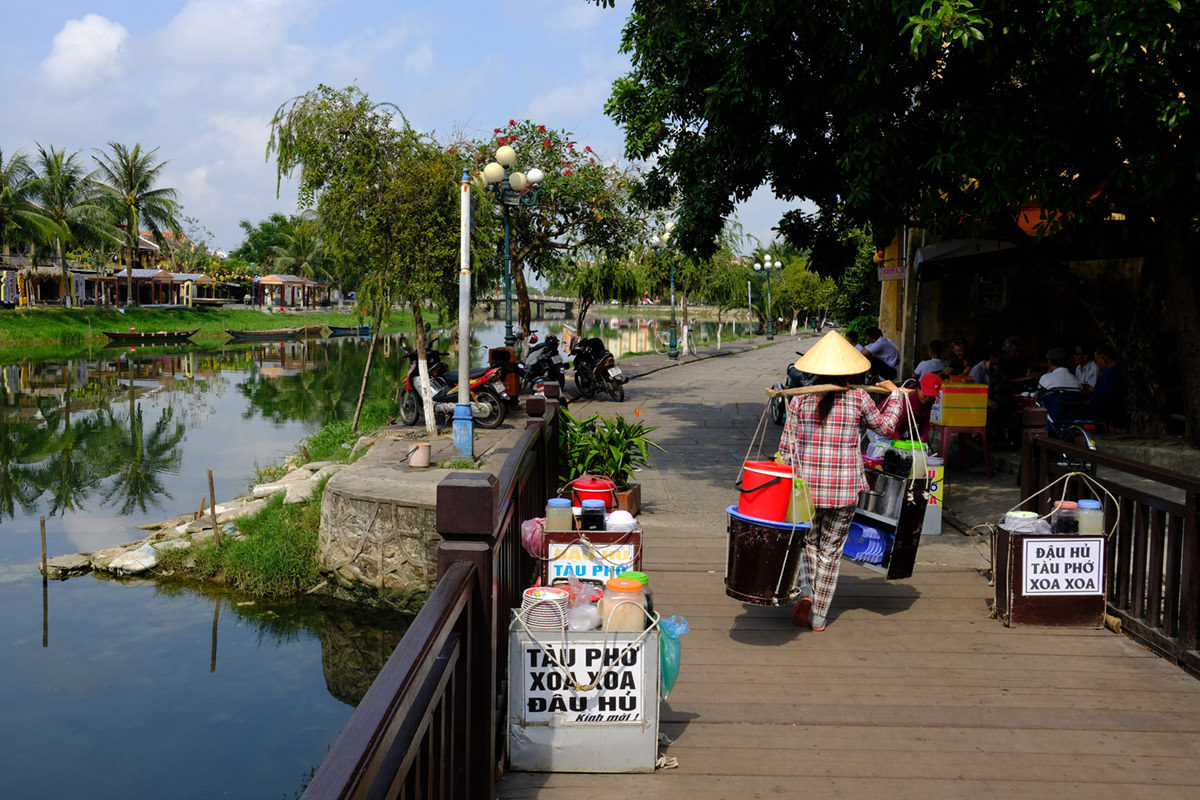
Mì Quảng isn’t exclusively available in Hoi An, but it originates from the province Hoi An is part of. This fare also has noodles and fresh vegetables but is more complicated than cao lau. Mì Quảng is available with pork, chicken, beef, fish, and shrimp. The broth is rich with the meat stock, fish sauce, onion, pepper and garlic. Even though the ingredients are served in a small amount of soup, you can still distinguish the yellow-orange color from the turmeric. Chilis and lemon parts on the side can be added for even more explosive flavor components.
Both of the dishes can be found in many roadside stalls across town, but I found the most affordable bowls in the street Thai Phien, just north of the Old Town. For only 15.000 dong per bowl you get to experience the ultimate flavors of Hoi An.
Where to stay in Hoi An
Most itineraries will recommend at least 3 nights for Hoi An. You can browse hotel deals here.
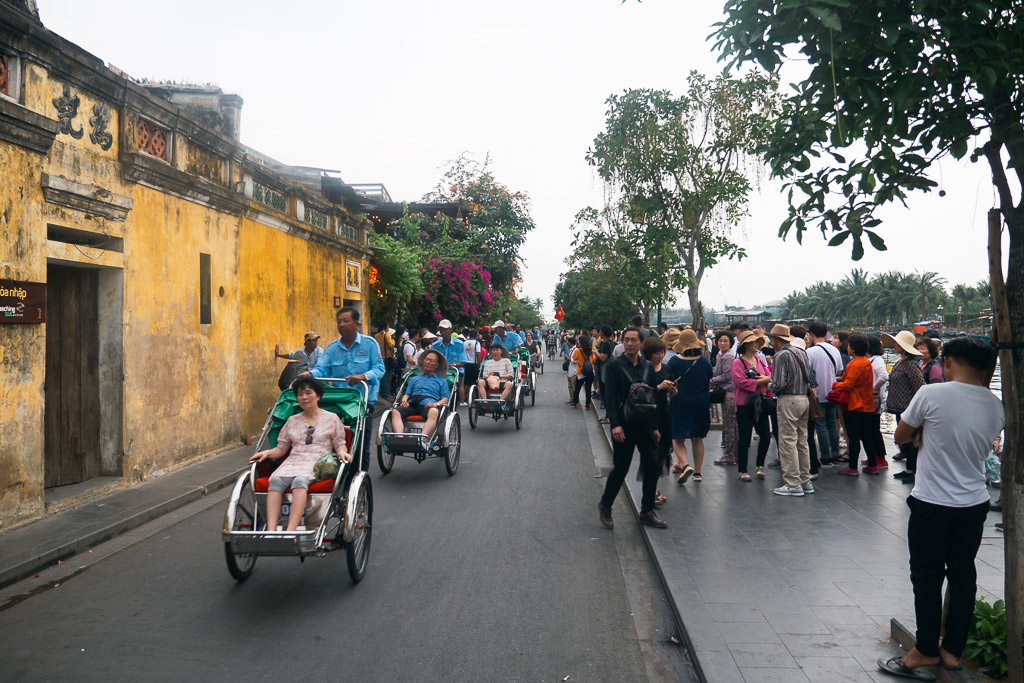
If you want to stay somewhere chilled but still close to town, consider looking all around the riverbend east of town, where you’ll find lots of quiet bungalow resorts and hostels. This is easiest if you rent a bicycle or scooter.
Digital nomad friends of mine stayed in Hoi An for over a month on the outskirts of town among the rice fields (e.g. at Hub Hoi An). They can’t stop raving about it.
Thanks to Huub Lakerveld for many contributions to this guide.
Some links may be affiliate links, meaning I may earn commission from products or services I recommend. For more, see site policies.


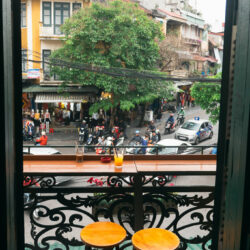





Hi Marek,
I am a new travel blogger and I just wrote this detailed review about Bach Ma National Park in Hue, Vietnam, which is very near Hoi An.
This is also a great attraction in Vietnam. Please also take a look at it if you have time.
Thanks for sharing about Bach Ma!